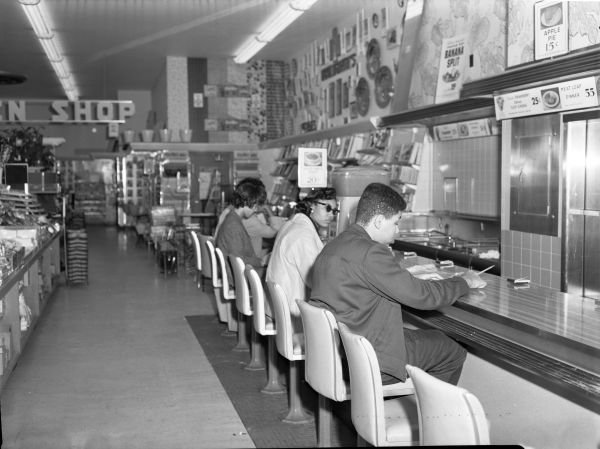Sit-Ups
Teaching Reflection by Maggie Nolan Donovan
Sit-in at Woolworth's lunch counter in Tallahassee on February 13, 1960. State Library and Archives of Florida.
Teachers often wonder how much influence their teaching of a particular lesson holds. What do children retain, and how have they interpreted the lessons within the lesson? Usually we don’t know, but sometimes we get a sign. On Friday mornings in my first grade classroom, students write in their journals about something they have learned in school during the week. This information later appears in a family newsletter.
One Friday, in a week where we’d talked about sit-ins, two girls asked if they could sit together so that they could compare notes. They wanted to write about the same thing in each of their journals. The two girls, one Black and one white, alternately whispered and wrote. Their heads were down and almost touching; they seemed wholly absorbed by their task.
After a while Amber called me over. She wanted to know how to spell sit-ups. I helped her figure it out but inwardly I felt a familiar itch of irritation. Children were writing about gym class once again when I had hoped for a more academic focus. More time passed. Kali called me over. She needed help spelling ketchup.
Once again I obliged, and once again I felt the itch. First gym, now lunch! Finally, they were finished. They seemed very pleased with their work and called me over to see it. Each girl had written, “The students held sit-ups at lunch counters. People poured ketchup and mustard on them.” They had illustrated their pages with vivid, detailed drawings. When we brought our journals to a sharing circle, the girls read their entries. I had been tempted to correct them, but fortunately I had held my tongue.
Their classmates considered the entries carefully. Some said they thought the term was sit-ins. Amber and Kali held their ground in their reply. Perhaps so, but the students didn’t slouch at that counter. They kept their backs straight and their heads high because you’ve got to sit UP for your freedom. This argument was greeted with noisy approval. Children’s backs straightened as they sat. That year was the year of the sit-up movement in our class. And once more I had seen how young children make history their own.

